Since my childhood, I have been listening to many stories about Africa, not all are necessarily fascinating. During the course leading up to my adulthood, I started to become more and more curious about Africa and South America. To be honest, I was extremely desperate to gain the opportunity of Research Fellowship at the Centre for Global Health (CGH), University of Oslo (UiO) when I discovered Ethiopia (which is Abyssinia in my childhood stories) as the study site for my PhD project. Fortunately, I was granted the fellowship I so desperately wanted and for this I consider myself very privileged. As part of my preparatory research activities, I visited Jimma, Ethiopia from June 30 to July 07 2019 with the generous support of the EXCEL SMART JUiO NORPART Project, fostering academic cooperation between Jimma University (JU) and UiO.
“You know you are truly alive when you’re living among lions.”
― Isak Dinesen, Out of Africa
My aspiration for visiting Ethiopia lies in the statement above. I was fortunate to enough to share these aspirations and this experience with my mentor and life philosopher (although he is my co-supervisor), Kristian Ernst Rodland. Together, we started our journey from Oslo on the sunny afternoon of June 29 with Ethiopian Airlines via Stockholm and Addis-Ababa.
Welcome to Ethiopia
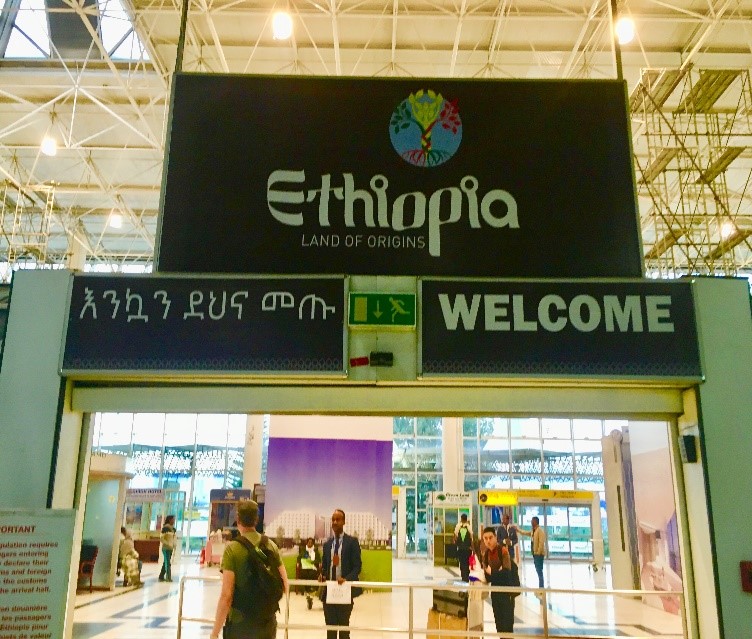
The country welcomed me long before my visit really started. After an overnight journey, we arrived at Addis-Ababa Bole International Airport, one of the most crucial and busiest hubs of international routes linked to Africa. To me, an airport is like an universe where people from all races and countries move across. The airport is nicely decorated, having many ATM booths with lots of expansion work happening. The adjacent domestic airport seemed to be a bit more outdated with red concrete floors and architectural design from the past. The internet was lacking at times, which makes modern tools and remote access not so bad.

Journey to Jimma
Most of the passengers on the domestic flight from Addis to Jimma Aba Jifar airport were foreign students and researchers, which indicated the importance of Jimma as a popular destination of education, research and collaboration. We landed at a small, but cozy airport in Jimma on the last day of June. Within 10 minutes, we left the airport and made our way to Central Jimma Hotel.
Fun Fact
I know that Kalid is not familiar to you,
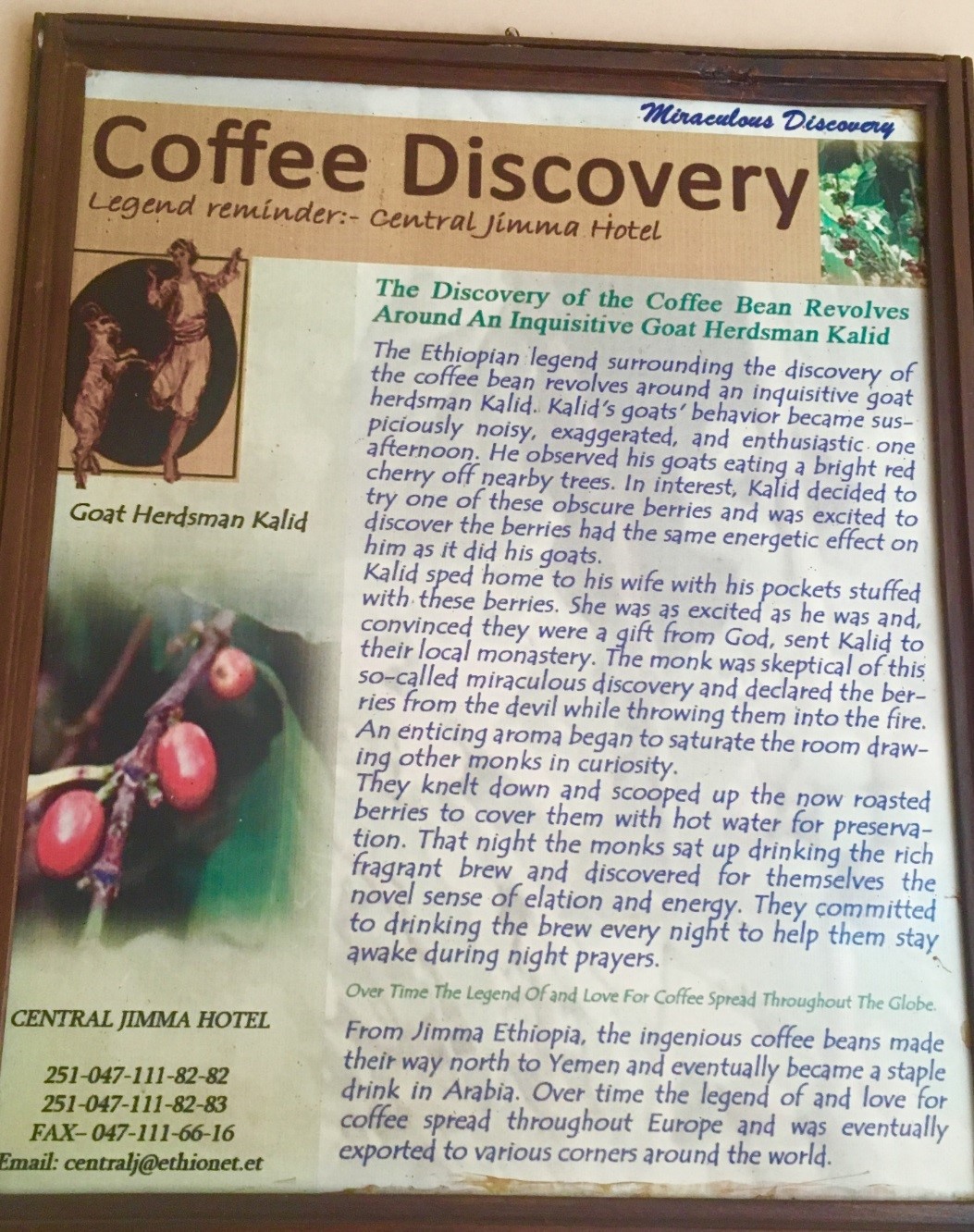
but we all, especially Norwegians are indebted to him. As you may or may not know most Norwegians start and possibly end their day with a cup of coffee. Kalid, a goat herdsman and his goat discovered the coffee beans in Jimma.
First night in Jimma – Sleepless, but delicious food
My slow and steady life in Jimma started with rain and a sleepless night. I never sleep well my first night in a new place, but the cold weather, swimming pool in view from my balcony and the abundant mango and avocado trees were so refreshing and soothing. The round, pyramid shaped mosquito nets hanging from the roof were also very interesting!
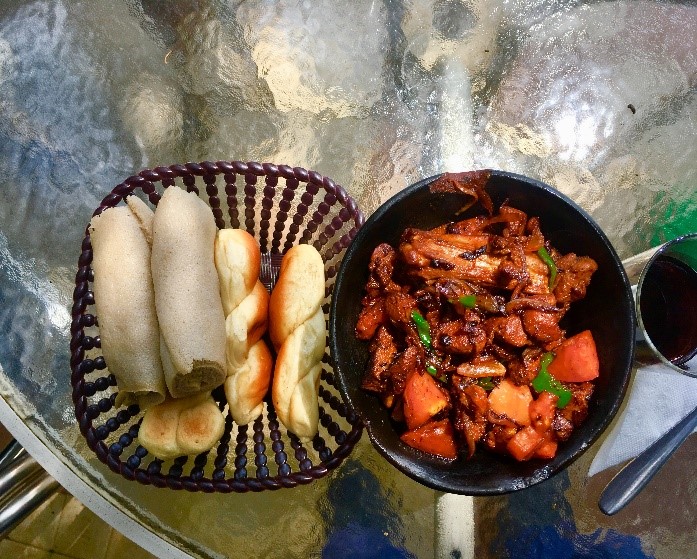
Like Virginia Woolf, I also believe that “One cannot think well, love well and sleep well if one has not dined well” and I am a foodie man, no shame to admit. The Ethiopian food is too good to resist and this is proven with the weight I gained in just one week. One of my favorite dishes in Jimma was called Injera. The dish consists of a spongy flatbread with little salty taste, spiced lamb/beef meat in different variations, like the shakla tibs (sizzling variety), and the fresh fruit juices (e.g. mango, avocado). Mango is available year round in Ethiopia. My traveling companion, Dr. Kristian was most fond of Jimma’s coffee and beer. The food is inexpensive everywhere except the hotel we stayed at.
Visit to Jimma University and the local community
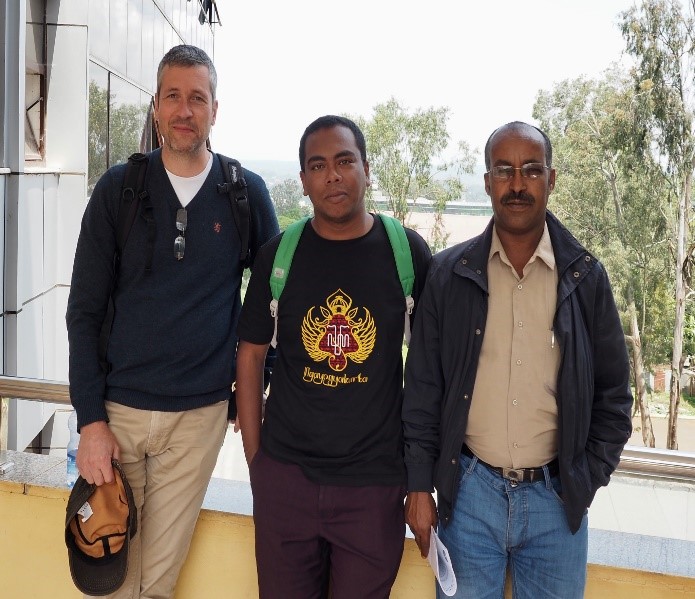
We visited three campuses (Life science campus with Jimma hospital, the Agriculture and Veterinary campus and the Engineering campus) at Jimma University with Prof. Zeleke Mekonnen, Director of Health Research at School of Medical Laboratory Sciences. We were lucky to see the graduation ceremony of the university during our visit to Jimma University. We met with many key personnel at the university and some local people who helped us to get a clear idea about what Jimma has to offer. We explored many places in the city including local markets, handcraft shops, public libraries, restaurants and museums. One day, we visited Marawwaa subdistrict (Kabala) of Karsa district with our local guide, Mr. Bashahun where we talked with the local people and observed their households, lifestyle, livestock farming and aquatic system (water tank ,ponds, rivers etc.).
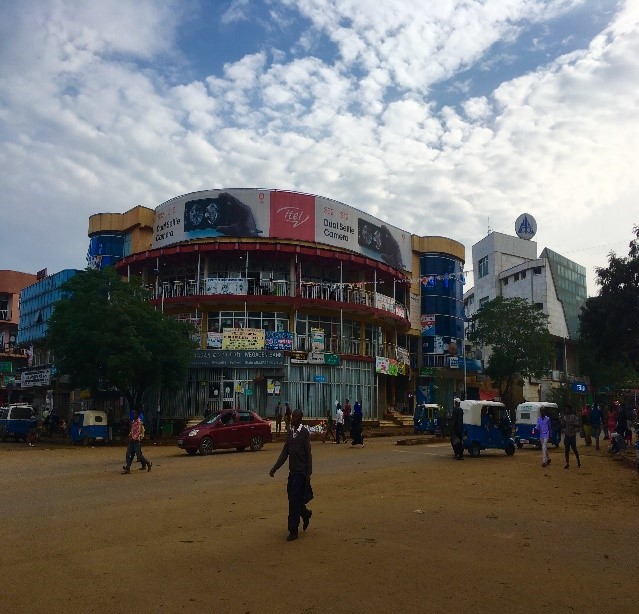
This was my maiden visit to sub Saharan Africa and overall, I had a great experience getting to know the people, weather, culture, language and social values of the people of Jimma. The people (especially the kids) are splendid just like their food and nature. I would love to visit this part of the world again and again, and to help them through my research and knowledge, if possible.
